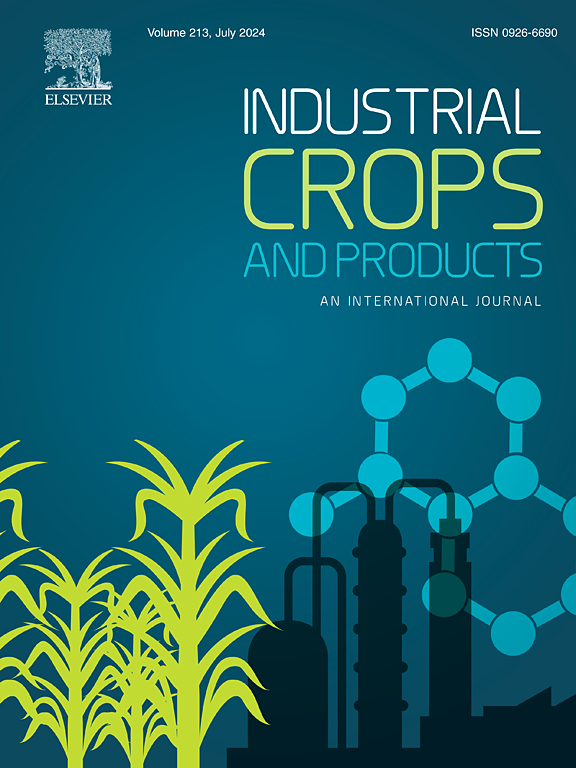Eco-friendly geopolymer bricks synthesized from alkali-activated sugarcane bagasse ash and rice husk ash
IF 6.2
1区 农林科学
Q1 AGRICULTURAL ENGINEERING
引用次数: 0
Abstract
The experimental research conducted involved the use of industrial crop residues as raw materials, specifically rice husk ash (RH) and sugarcane bagasse ash (SB) aimed at examining potential applications in sustainable building materials. Some of the crucial properties recognized are porosity, resistance to acids, water absorption at normal and high temperatures, bulk density, and compressive strength. Since the alumina content of RH is very less it was essential to replace it with SB in order to balance it with aluminates. Specimens of geopolymer brick were prepared with different concentrations of NaOH and cured for 7, 28, and 90 days. The highest strength in compression was found at a concentration of 16 M NaOH. The casted specimens then went into testing and characterizing various Si/Al ratios. It has been known that alumina has a positive effect on the grain boundary; however, it reduces the compressive strength. Specimens with a Si/Al ratio of 2:1 showed higher compressive strength after 90 curing days compared with the samples that had ratios of 3:1 and 1:1. These crop-based geopolymer bricks, using crop-derived ash materials, comply with ASTM C62 and Egyptian standards. These might be excellent sustainable industrial alternatives in the construction materials, aligning to SDG 9 and 11, industry, innovation, infrastructure, and climate action. This study promotes the eco-friendly industrial applications of agricultural byproducts, leading to innovation and contributing to climate action by reducing cement consumption.

以碱活化蔗渣灰和稻壳灰为原料合成的环保型地聚合物砖
所进行的实验研究涉及使用工业作物残留物作为原料,特别是稻壳灰(RH)和甘蔗甘蔗渣灰(SB),目的是研究在可持续建筑材料中的潜在应用。已知的一些关键特性是孔隙度、耐酸性、常温和高温下的吸水率、体积密度和抗压强度。由于RH中的氧化铝含量很少,因此必须用SB代替它以与铝酸盐平衡。用不同浓度的NaOH制备地聚合物砖试件,分别固化7、28和90天。当NaOH浓度为16 M时,其抗压强度最高。然后将铸造试样进行测试并表征各种Si/Al比率。众所周知,氧化铝对晶界有积极的影响;然而,它降低了抗压强度。硅铝比为2:1的试件在养护90天后的抗压强度高于硅铝比为3:1和1:1的试件。这些以作物为基础的地聚合物砖,使用作物衍生的灰材料,符合ASTM C62和埃及标准。这些可能是建筑材料领域优秀的可持续工业替代品,符合可持续发展目标9和11、工业、创新、基础设施和气候行动。这项研究促进了农业副产品的环保工业应用,导致创新,并通过减少水泥消耗为气候行动做出贡献。
本文章由计算机程序翻译,如有差异,请以英文原文为准。
求助全文
约1分钟内获得全文
求助全文
来源期刊

Industrial Crops and Products
农林科学-农业工程
CiteScore
9.50
自引率
8.50%
发文量
1518
审稿时长
43 days
期刊介绍:
Industrial Crops and Products is an International Journal publishing academic and industrial research on industrial (defined as non-food/non-feed) crops and products. Papers concern both crop-oriented and bio-based materials from crops-oriented research, and should be of interest to an international audience, hypothesis driven, and where comparisons are made statistics performed.
 求助内容:
求助内容: 应助结果提醒方式:
应助结果提醒方式:


